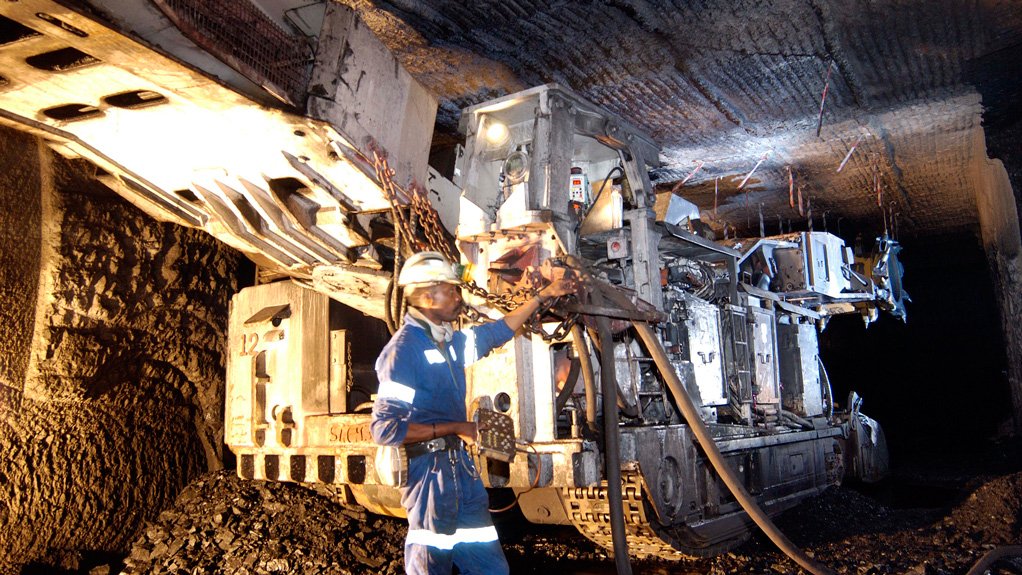It remains possible to realise potential growth opportunities in the African mining industry despite the challenges of local economic constraints, volatile commodity prices, corruption and regulatory uncertainty, says international law firm Hogan Lovells.
Hogan Lovells mining and natural resources specialist Kevin Pietersen says the current key destinations in Africa are Ghana, Zambia, Burkina Faso and the Democratic Republic of Congo (DRC), with gold, as suspected, the strongest performing and most prospected for resource. He adds that Africa’s preference for gold, which is considered a safe haven when currency markets are volatile, is consistent with the prevailing global economic situation.
He asserts that, as always, political uncertainty in Africa and the global economy as a whole have definitely had an impact on foreign direct investment (FDI), especially from banks.
Pietersen notes that, despite these challenges, those in the African mining industry continue to undertake significant capital investments. He mentions that it is expected that this continued investment by mining companies on the continent has the potential to reignite confidence among foreign investors.
Pietersen adds that, with the current depressed commodity prices, the past few years have been dismal for the mining sector and more so for junior miners.
“Investors have become increasingly more risk averse and junior miners have found it very difficult to raise finance. It should also be noted that some of the major mining companies have drastically reduced their expenditure which resulted in the reduction of exploration budgets.”
Pietersen notes that investment in the African mining sector comes from a range of sources, including corporate banks and private equity, but it cannot be ignored that the continent remains a high-risk investment destination and the lack of liquidity is emphasised by the flight of capital to safer jurisdictions.
As a result of the lack of liquidity, both borrowers and lenders need to develop refined strategies and financial products to deal with the risk of doing business on the continent, he advises, adding that these strategies will vary by jurisdiction, commodity and the stage of project development.
Equity Option
In addition, Pietersen notes that equity remains the most sensitive financing tool available to miners but carries the highest risk component in the funding spectrum.
He explains that the equity capital market, for instance, in Australia (ASX), Canada (TSX) and in the UK (LSE/Aim), remains challenging, both in terms of current valuations and the level of eagerness of investors to undertake investment in mining.
Therefore, mining companies in Africa should focus on generating alternative sources of equity funding through private-equity funds, sovereign wealth funds, hedge funds and trading houses, among other options.
“Mining companies can derisk such investments by optimising capital spend and commodity-linked funding, which includes royalties and commodity prepays, something that has also become increasingly popular for mining companies seeking funding solutions,” Pietersen comments.
Although these funding products remain challenging to bed down in certain African jurisdictions, he says, the mining sector has seen an increase in the number of commodity-linked transactions in Africa. Pietersen points out that commodity trading houses, such as Trafigura, Vitol, Noble and Blackrock, have become increasingly active on the continent.
African equity funding sources such as the Industrial Development Corporation and the Public Investment Corporation also have an increasing African mandate when it comes to investing in mining.
Infrastructure Need
Attracting investment would help solve one of the largest challenges faced by the mining industry in Africa – despite being the most mineral-rich continent in the world, it remains largely underexplored and underindustrialised.
Pietersen comments that considering that one-third of the world’s mineral reserves are in Africa, including most of the world’s platinum-group metals, cobalt and diamond reserves, as well as nearly 40% of its gold reserves, the biggest potential for Africa lies in the successful exploration, extraction and beneficiation of its resources.
He notes that a possible avenue to reach the continent’s mining potential is infrastructure development, such as power capacity, water, ports and railways, emphasising that the potential is also there for governments to leverage off mining-related infrastructure for regional economic development.
“If the shared use of mining infrastructure between the mining company and third parties can be achieved, it should result in the wider distribution of mining-related investment benefits.”
Pietersen explains that, if mining companies are offered the right incentives, mining and associated infrastructure projects could align with the country’s long-term infrastructure strategy. “Local governments and mining companies should plan infrastructure development around mineral resource exploitation, as this could give rise to private and public finance for related projects.”
Further Challenges
He asserts that the challenges faced by the African mining industry are exacerbated by the continued global financial crisis, especially when importing mining equipment from international markets.
“In South Africa, the cost of mining has increased dramatically, owing to labourers’ demands for increased wages and the rising cost of electricity. Consequently, many major role-players have had to reduce their workforce, which, in turn, presents further challenges,” Pieterson emphasises.
He explains that some of the larger mining houses have mitigated the risk of being unprofitable, owing to increased operating expenses, by “radically” reducing their staff complement at the cost of productivity. This has, in some cases, stabilised the supply and demand of some commodities.
In addition, legislation, such as the Mineral and Petroleum Resources Development Act Amendment Bill, imposes continuous regulatory hurdles for mining companies, requiring the costly practice of appointing various experts to ensure compliance.
“Regulatory challenges can be mitigated through frequent consultation with legal professionals within the mining industry, who are able to understand the operations of a mining company and strategise with their clients around complying with legislation,” Pietersen advises.
He concludes, however, that, as the challenges facing the mining industry are vast, it is exceptionally difficult to mitigate them all.
Edited by: Tracy Hancock
Creamer Media Contributing Editor
EMAIL THIS ARTICLE SAVE THIS ARTICLE
To subscribe email subscriptions@creamermedia.co.za or click here
To advertise email advertising@creamermedia.co.za or click here













